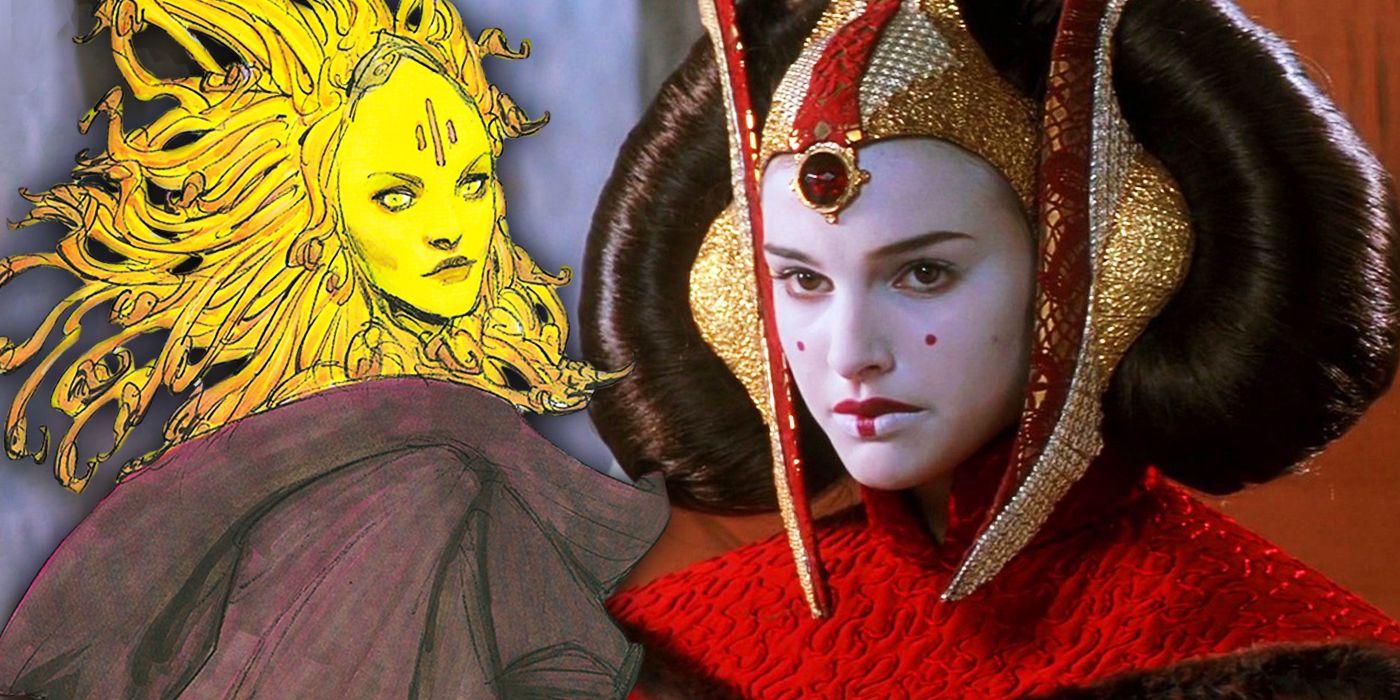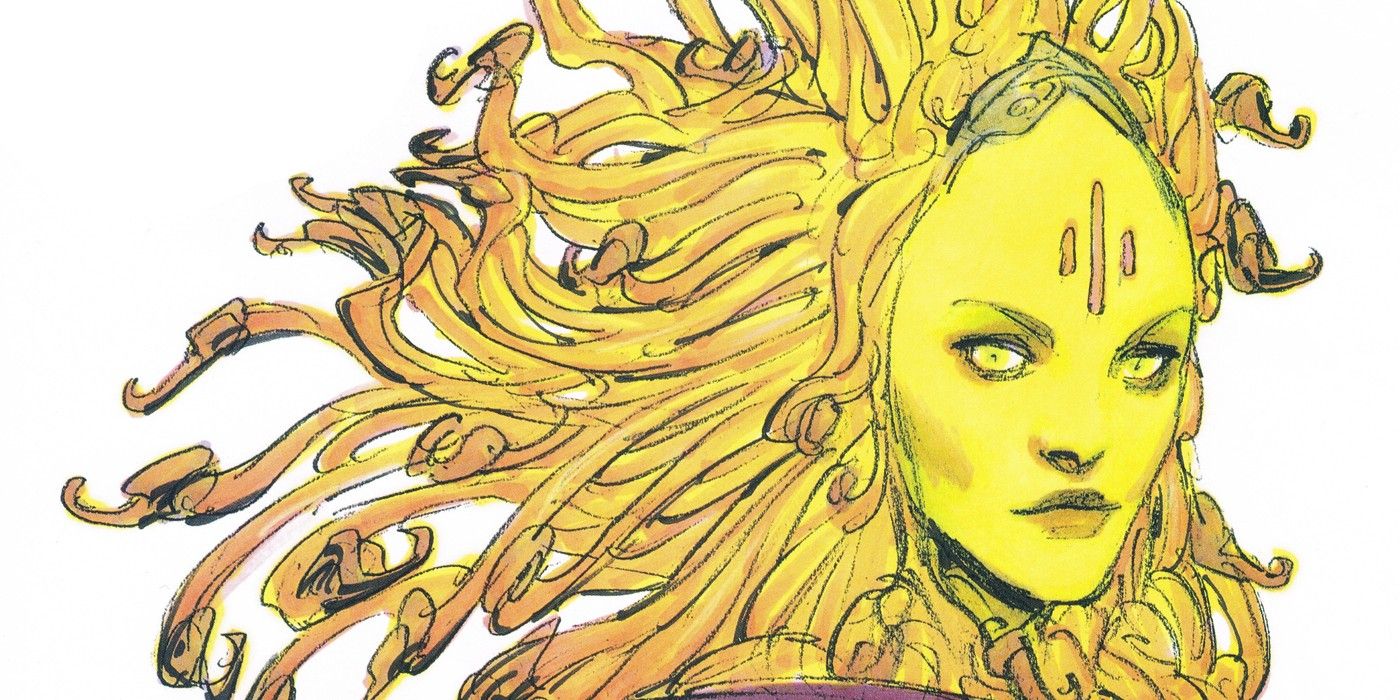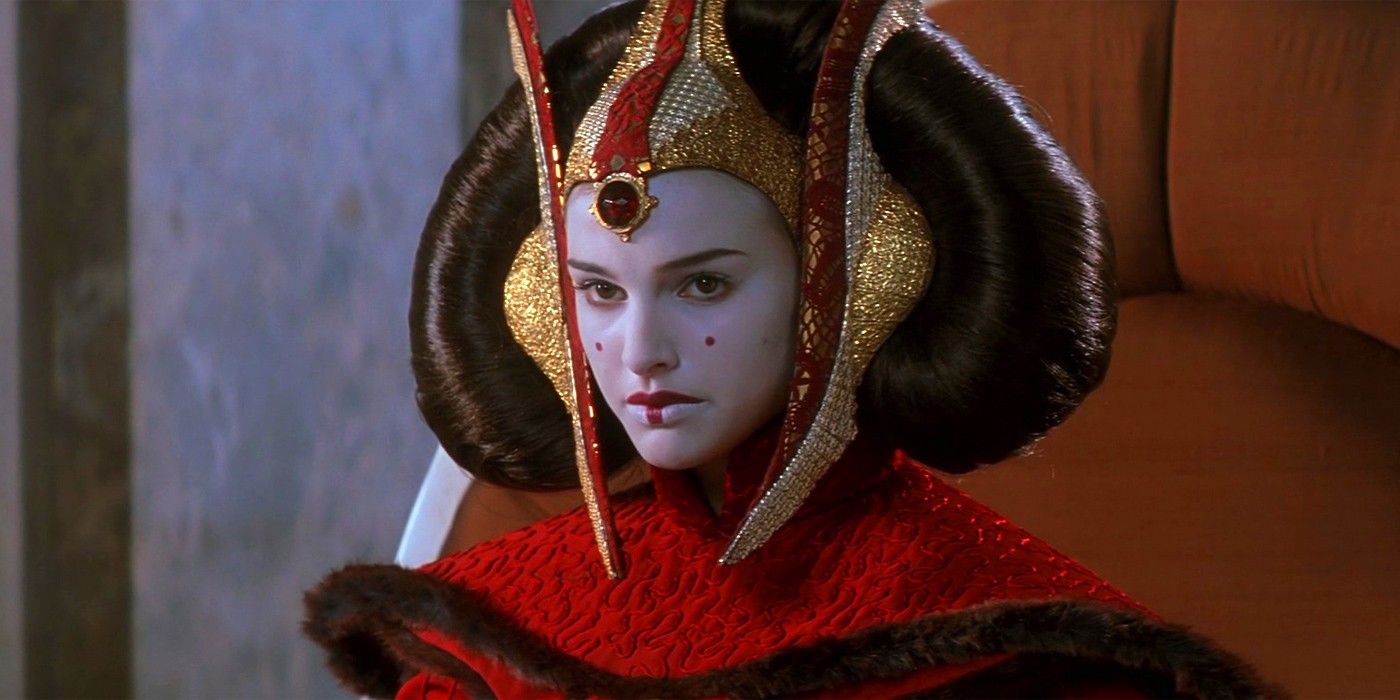The Sith Lords of Star Wars are primarily male, but according to The Art of Star Wars: Attack of the Clones book by R. A. Salvatore, the Sith apprentice void left by Darth Maul at the end of The Phantom Menace was almost filled by a dark mirror version of Padmé Amidala. The role ultimately went to Count Dooku, but the concept art for this "Dark Padmé" remains available, and set the stage for later female Sith characters.
The Art of Star Wars: Attack of the Clones chronicles the quest to create the Sith to succeed Darth Maul. Iain McCaig, who developed Darth Maul for Episode I, was determined that the new Sith apprentice to Sideous should be a woman. Regarding a female Sith Lord, McCaig stated, "I felt this was a great opportunity to introduce a strong woman character, to give girl fans an icon." He continues, "the challenge was finding a new archetype that would stand up there with Darth Vader and Darth Maul." The Dark Side of the Force has always been a cesspool of power-hungry masculinity, but McCaig's Dark Padmé would have been a vessel for empowering women to access the full range of human experiences. In other words, it would show that women can enjoy the allure of the Dark Side and prove to be worthy adversaries of the Jedi, too.
McCaig's vision of Padmé as a Sith Lord included a Medusa-like hairstyle that played off of Amidala's ornate headdress. Instead of Amidala's usually pristine white face paint, the Dark Queen would have cracked face paint and a ghastly hue. Around this time in the conceptual stage, film concept artist Dermot Power was creating a more austere and vampiric female Sith that would later become Asajj Ventress. While Ventress is a fierce representation of female-driven vengeance and power lust, the situational intricacies of Dark Padmé would have opened up sinister avenues for the Star Wars prequels.
Having the Dark Queen as Maul's replacement would have created some new conflicts for Padmé, who was a fairly underdeveloped, one-dimensional character. Keeping the female Sith in the main saga would have also further complicated Anakin and Padmé's relationship, as well as Anakin's eventual fall to the Dark Side.
With the Dark Queen as her own distinct character, she would have provided a foil to Padmé's benevolent nature, and an interesting dark mirror effect on the Queen's lavishly adorned hair style. The Dark Queen could have further diversified the Sith Order with the exploration of her own inner conflicts that led her to the Dark Side. Having the conceptual title of "Dark Queen" would have been an interesting foray into Sith royalty, especially when this figure would be serving as Sideous' apprentice.
The Rise of Skywalker hinted at the idea of a Sith female when Rey had a Force vision of herself fallen to the Dark Side. But the Dark Queen would have been an entirely separate character from the Queen, who bore a striking resemblance to Padmé. This distinction would have allowed for a number of parallel motifs, rather than just a straight story of a single corrupted character's fall from grace. McCaig's dark reimagining of Amidala would have been the franchise's first look at the duel nature of characters on both side of the Force and how that distinction changes their story.
A female Sith Queen almost brought a new spectrum of color to the Sith experience. Coming off the heels of Darth Maul, Dark Padmé could have been an icon to female fans looking for a strong and glamorous Sith Lord, demonstrating that anger does not just dwell in the hearts of men.



